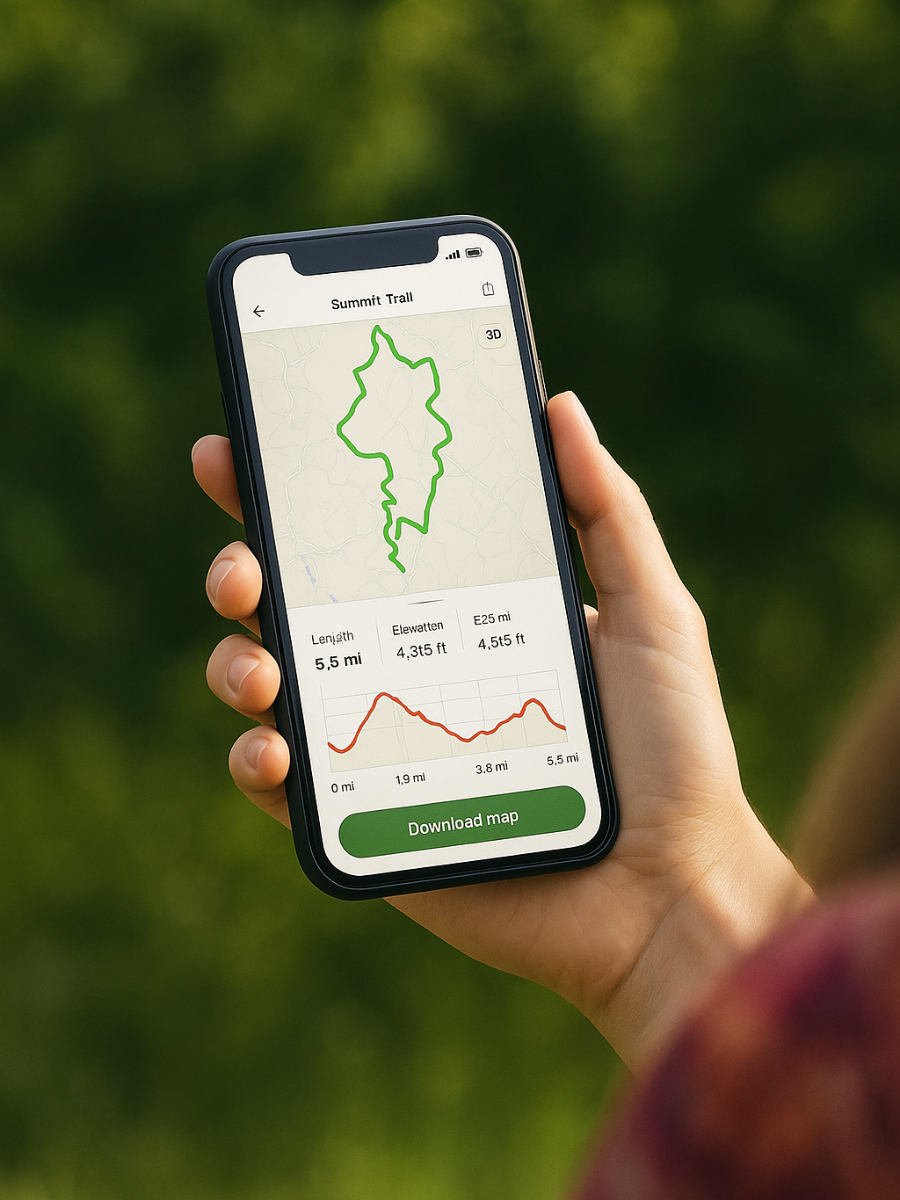
📡 What Is AI Trail Mapping?
AI trail mapping uses machine learning, satellite data, and user inputs to deliver up-to-the-minute trail information.
Unlike static maps, it adapts to real-time events like weather damage, wildlife movement, or temporary closures.
In the backwoods of Alberta or deep into a national park, it’s like having a digital scout ahead of you.
It’s ideal for remote adventurers, weekend hikers, or off-road riders like myself — always out of cell range but never truly offline anymore.
📚 Table of Contents
🧠 How AI Enhances Real-Time Trail Data
AI systems analyze trail patterns, satellite images, and crowd-sourced updates to update route suggestions instantly.
Imagine a flooded creek rerouting you mid-hike or a wildfire warning pushed to your Garmin.
With predictive alerts, you can avoid rough patches, animal activity, or even flash flood zones.
For someone like me who cuts their own camping firewood sometimes far from main roads, this kind of foresight is a game-changer.
📱 Best AI-Powered Apps and Tools for Trail Mapping
- Strava – Offers stunning 3D terrain and real-time weather layers, perfect for mountain or trail analysis.
- Gaia GPS with Gaia AI – Top-notch for backcountry routes and weather overlays that matter.
- Komoot – Combines crowd-sourced user data with AI to suggest optimal trail conditions.
- Garmin Explore App – AI-enhanced terrain data for use even without cell service.
⚠️ Safety First: AI Trail Mapping Saves Lives
Whether you’re navigating through wildfire zones or avoiding a sudden river surge, AI-driven alerts make the difference.
Many AI apps offer SOS features and breadcrumb tracking for emergency rescue teams.
Real-time mapping prevents getting lost, especially when landmarks or signs are gone due to extreme weather.
This level of trail confidence means I can fish, explore, and collect firewood without putting my family at risk.
🌱 Conservation Meets AI: Protecting Trails and Nature
AI helps identify overused trails and fragile zones, allowing hikers to reroute and reduce environmental stress.
Land managers use AI-generated maps to monitor erosion, track invasive species, or plan reforestation.
It’s a win-win — preserve natural spaces while keeping access open and responsible.
If you’re camping near sensitive ecosystems, this tech helps you tread lighter.
🧭 Real-World Applications and What’s Next
Strava is integrating drone footage in 2025 to create ultra-live topography maps.
Apps are partnering with AI weather platforms like Windy to overlay wind forecasts over trails.
Devices like the Garmin Instinct 2X now combine AI predictions with your physical trail data—watch-based decisions in real-time.
As someone always seeking off-grid experiences, these new capabilities make the backcountry more welcoming and way less risky.
🔤 Want to Learn More AI Trail Mapping Terms?
If you’re new to smart outdoor navigation or just want to sharpen your trail tech knowledge, we’ve created a full glossary. Explore definitions of the most essential AI Trail Mapping terms, from real-time mapping and machine learning to geofencing, breadcrumb trails, and more.
Visit the full glossary here: AI Trail Mapping Terms Glossary
🔚 Conclusion: Why AI Trail Mapping Is a Must-Have for Modern Adventurers
It’s 2025, and nature isn’t what it used to be — storms strike fast, trails vanish, and danger feels one step closer. That’s why AI trail mapping has become my go-to tool in the wild. It keeps me informed, safe, and just a bit more connected without ruining the solitude. Whether you’re deep in the Rockies or exploring weekend backroads, bring AI along for the journey — it could be your most trusted guide.
Affiliate Disclosure
Some links in this post may be affiliate links. As the creator of SunnyDaysGo.com, I only recommend gear and gadgets I believe bring real value to your outdoor adventures. If you click a link and make a purchase, I may earn a small commission at no extra cost to you. Thank you for supporting my work and helping keep this site ad-free and growing!
